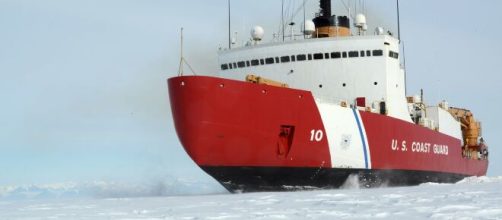In addition to outer space, indicators point toward the Arctic as being the next great military frontier. Various countries have been trying to figure out how to lay their claim on the territory.
A key part of this would probably be having a large number of icebreakers. Ships that are specifically designed to be able to break through the ice on bodies of water. The Russian military reportedly has 40 icebreakers on hand, by far the most in the world. The Guardian reports that Finland is number two, with seven. Canada and Sweden are tied in third place, both with six icebreakers.
The United States is looking to move up the list and fast.
Ordering a new fleet to be completed by the end of the decade
Senator Dan Sullivan has been at the forefront of increasing the U.S. presence in the Arctic for years. The Alaska Republican's efforts may have finally paid off. Donald Trump has ordered a new U.S. Coast Guard fleet of icebreakers to be ready by 2029. The Cabinet Departments of Defense, Homeland Security, State, and Commerce have been put to task. So has the Office of Management and Budget.
According to Defense News, some progress has already been made on this front. Including a contract between the Coast Guard and the Mississippi-based company VT Halter Marine. It was an agreement for VT Halter Marine to design an icebreaker-class cutter for the Coast Guard.
The directive also brings up the potential of nuclear-powered icebreakers. Something that only Russia reportedly currently operates. It also calls for four bases to be constructed as ports for the icebreakers. Two would be in the United States, with at least one probably in Alaska. The other two would be located in other countries, which have not yet been specified.
In the meantime, the U.S. could lease icebreakers from other countries until a new fleet would be ready. Most likely from Finland, Sweden, or Canada. It would not be the first time that the U.S. government has leased foreign icebreakers. It's done so more than once for the McMurdo research station in Antarctica.
The Coast Guard currently has three operational icebreakers
Three Coast Guard icebreakers remain active. But only one is really considered a so-called 'heavy' icebreaker. That is the USCGC Polar Star, first launched in the 1970s. Its sister ship, the USCGC Polar Sea, is still afloat and would, in theory, also be strong enough. But it's been out of service for a decade after a quintuple-engine failure.
The other two remaining icebreakers weren't built to be as strong as a heavy icebreaker. However, one of them, the USCGC Healy, has navigated the Arctic, even reaching the North Pole. The other icebreaker, the USCGC Mackinaw, roams the Great Lakes in North America.
The U.S. Navy has also sent vessels to the Arctic on many occasions. But even still, the Navy does not feature an icebreaker in its arsenal.


